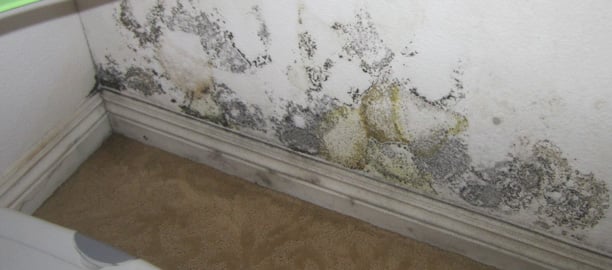
By taking the right action as soon as possible soaked carpet and drywall (wallboard, sheet rock, plasterboard, or gypsum board) can be saved in many cases. But that’s provided the extraction of excess water and further drying is completed promptly. The amount of water isn’t the key factor in determining if irreparable carpet and drywall damage can be prevented. It’s actually how contaminated the water is and how soon the materials can be completely dried.
Every flooding situation is different, so bringing in expert water damage restorers is the only way to be completely sure of proper damage restoration that keeps everyone safe and minimizes losses. That said, here is some general information that should be helpful.
Deal Killers
Anything that’s come in contact with sewage (Category 3, formerly called black water, such as a sewer or toilet backup) must be replaced, or sterilized by an anti-microbial specialist. The same goes for any type of flooding from a water source that’s been in contact with the ground (also Category 3).
A washing machine or dishwasher overflow, basement seepage, and yard runoff are iffy. You’re dealing with unsanitary water (Category 2) that’s a lower health risk, so careful cleaning and disinfection may be adequate.
If the source was a drinking-water supply pipe, roof, or window leak (Category 1) then you just might be able to keep your carpet and avoid drywall repairs. But that’s only if drying undertaken almost immediately and there’s no mold growth.
Carpet and Rugs
With nearly all wall-to-wall carpets and rugs today made of synthetic fibers the primary problems are mold and bacteria growth. So wet carpet can often be saved if it’s thoroughly dried out before that gets going. The bad news is that you may have as little as 24-48 hours.
For spills and small leaks, blotting by laying down a few towels and walking over them may be enough. You might want to follow that up with a sprinkling of baking soda then vacuuming a bit later.
Dealing with a thorough soaking involves a lot more, as drying from the top surface simply won’t be fast enough. After the extraction of excess water by a wet-vacuum, the carpet should be lifted so it can be dried from both sides using fans to improve air circulation. Carpet padding is cheap and can’t really be cleaned, so you might as well replace it.
With the padding gone you can check the dampness of the concrete or wood sub-floor. If it’s wet you probably need a professional water damage restorer to get everything returned to pre-flood condition. It’s also a good idea to remove baseboards so that they and the drywall behind them can dry faster as well.
It’s generally recommended that to be safe after major incidents you should run fans 24 hours a day for about a week. Depending on conditions, that may also involve sealing the area with plastic and running dehumidifiers. After everything is dry, the padding replaced, and the carpet re-laid the final step is professional carpet cleaning. Steam cleaning is preferred for sanitation, but some carpet fibers may only be shampooed.
Drywall
The material used for interior walls is basically a sandwich of gypsum between two layers of paper. It may seem rock-solid but it’s porous and absorbs water even more than bare wood. Wet drywall soon swells, sags, and bows… and supports growing bacteria and especially mold. So like carpet it needs to be dried as quickly as possible if it’s to be salvaged. Unfortunately, water damaged drywall often needs to be replaced.
With soaked flooring, wetness wicks upwards in drywall and inside wall cavities. So it’s necessary to remove baseboards to check. If the drywall is soft or distorted it will need drying and perhaps replacement. If there’s a problem it’s also necessary to check for dampness higher up, either by making a small inspection hole or using a penetrating moisture meter. If wood studs or insulation are wet, they take ages to dry so it’s time to call in professionals. They may use specialized wall cavity dryers, or simply replace the bottom 2 feet or so with new drywall.
Small areas may dry on their own, but for larger areas it’s often necessary for you to seal off affected rooms with plastic sheeting and rent high-volume blowers and high-capacity dehumidifiers. Vinyl wall paper and high-gloss paint also make drying particularly difficult, and may require openings in the top and bottom of the wall that must be repaired later. Even with all this dry out takes at least a few days, and should be continued until moisture tests sound an all-clear.
Safety Tip: Drywall ceilings can be a big hazard if there’s overhead leaks. You may think it only happens in cartoons or insurance commercials, but water can accumulate until there’s a catastrophic ceiling collapse and an accompanying deluge. So keep an eye out for dampness and water stains. And bulging or sagging are emergency signals.
